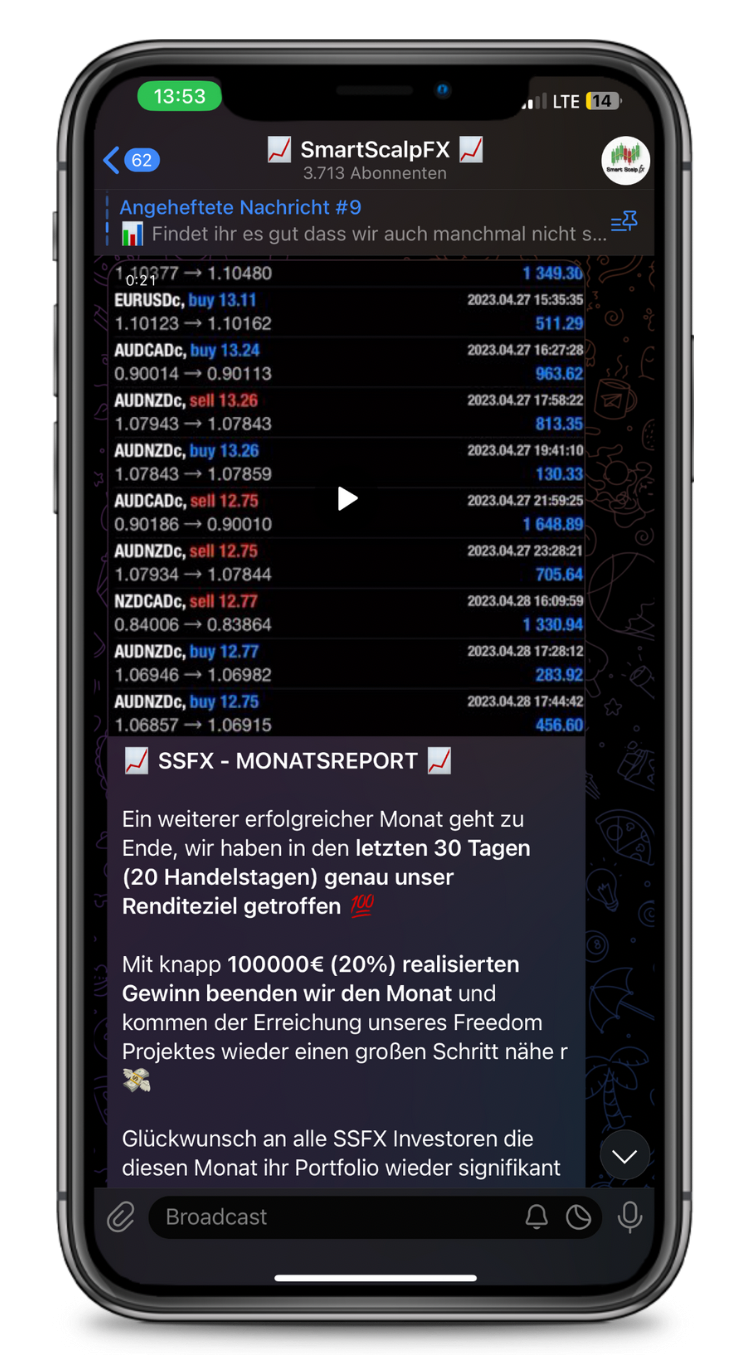Ekskluzywny dostęp do analiz/sygnałów ekspertów + bezpłatna wstępna konsultacja
Stwórz swoją niezależność finansową w czasach, gdy świat finansów zmienia się nieubłaganie
W jaki sposób możesz osiągnąć miesięczne zwroty w wysokości ponad +20 % i więcej w każdej sytuacji ekonomicznej w najkrótszym możliwym czasie dzięki swojej inwestycji, bez konieczności bycia ekspertem na rynku finansowym.

Witamy w SSFX Education, przewodniku po złożonym świecie mikro- i makroekonomii.
Skupiamy się na mikroekonomii, w szczególności na fascynującym sektorze bankowym. Przekonaj się razem z nami, że banki nie tylko działają jako pośrednicy finansowi, ale są również ściśle powiązane z bankami centralnymi. Rzucamy światło na to, w jaki sposób decyzje dotyczące polityki pieniężnej, takie jak ustalanie kluczowych stóp procentowych, mają bezpośredni wpływ na codzienne operacje banków, a ostatecznie na całą gospodarkę.
Nie zatrzymujemy się jednak na poziomie mikroekonomicznym. Makroekonomia jest równie ważnym tematem w SSFX Education. Dowiedz się więcej o zmianach stóp procentowych w różnych krajach i ich wpływie na globalną strukturę gospodarczą. Wspólnie przyglądamy się, w jaki sposób rynki finansowe i realna gospodarka oddziałują na siebie, wpływają na siebie nawzajem, a czasem oddalają się od siebie.
Ważna uwaga: SSFX Education dostarcza wyłącznie materiały edukacyjne. Nasze artykuły są dogłębne, dobrze uzasadnione i wolne od spekulacyjnych porad inwestycyjnych. Naszą misją jest promowanie edukacji i dostarczanie narzędzi pozwalających lepiej zrozumieć gospodarkę.
Zanurz się z nami w fascynujących tematach biznesowych i poszerz swoje horyzonty w SSFX Education.
Blog
FAQ
Jakie pytania zadawali sobie inni uczestnicy, zanim stali się aktywni
Gospodarka realna odnosi się do sektora gospodarki, który obejmuje produkcję towarów i usług. Obejmuje to wszystkie rodzaje działalności gospodarczej, w których rzeczywiste towary są produkowane, sprzedawane i kupowane - od żywności i maszyn po usługi, takie jak fryzjerstwo lub doradztwo.
Z kolei gospodarka finansowa lub sektor finansowy zajmuje się zarządzaniem pieniędzmi i innymi aktywami finansowymi. Podczas gdy realna gospodarka produkuje i sprzedaje fizyczne i namacalne produkty i usługi, sektor finansowy zajmuje się generowaniem zysków z posiadania lub handlu instrumentami finansowymi (takimi jak akcje, obligacje i instrumenty pochodne).
Mówiąc prościej, gospodarka realna zajmuje się rzeczywistą produkcją i konsumpcją towarów i usług, podczas gdy gospodarka finansowa koncentruje się na rynkach kapitałowych i pieniężnych. Oba sektory są ze sobą ściśle powiązane, ale mogą też mieć różne cykle i dynamikę.
Makroekonomia i mikroekonomia to dwie główne gałęzie ekonomii, które zajmują się różnymi aspektami działalności gospodarczej. Oto główne różnice:
*Mikroekonomia:*
1 *Kierunek: * Zajmuje się zachowaniem poszczególnych jednostek gospodarczych, takich jak gospodarstwa domowe, firmy i osoby fizyczne.
2 *Tematyka:* Kluczowe tematy obejmują podaż i popyt, ustalanie cen, rynki czynników produkcji (np. rynek pracy), indywidualne decyzje konsumentów i produkcję poszczególnych firm.
3 *Cel:* Celem jest zrozumienie, w jaki sposób kształtują się ceny, w jaki sposób zasoby są alokowane w gospodarce oraz w jaki sposób jednostki i firmy podejmują decyzje.
4 *Zastosowania:* Analiza rynku, zarządzanie przedsiębiorstwem, strategie cenowe, analiza konkurencji.
*Makroekonomia:*
1 *Kierunek: * Patrzy na gospodarkę jako całość i analizuje zmienne makroekonomiczne.
2 *Tematyka:* Główne tematy obejmują dochód narodowy, bezrobocie, inflację, wzrost gospodarczy, politykę pieniężną i politykę fiskalną.
3 *Cel:* Celem jest zrozumienie i wpływanie na ogólny wzrost, stabilność i kondycję ekonomiczną gospodarki lub regionu.
4 *Zastosowania:* Polityka gospodarcza, polityka pieniężna banków centralnych, międzynarodowe stosunki gospodarcze.
Prosty przykład, aby to zilustrować: podczas gdy mikroekonomia może badać, dlaczego konkretna osoba decyduje się na zakup samochodu zamiast roweru (indywidualna decyzja), makroekonomia raczej badałaby pytania dotyczące całkowitej produkcji samochodów w kraju lub przyczyn bezrobocia w danym regionie (aspekty makroekonomiczne).
Chociaż mikroekonomia i makroekonomia mają różne cele, są ze sobą ściśle powiązane, a ustalenia z jednego obszaru mogą być często wykorzystywane do zdobywania informacji w drugim.
Oczywiście w odniesieniu do tego, co zostało wcześniej omówione:
W makroekonomii recesja odnosi się do znacznego spadku aktywności gospodarczej w danym kraju w określonym czasie, zwykle w dwóch kolejnych kwartałach. Charakteryzuje się spadkiem produktu krajowego brutto (PKB), utratą miejsc pracy, spadkiem inwestycji przedsiębiorstw i zmniejszeniem konsumpcji gospodarstw domowych.
Recesja ma bezpośredni wpływ na realną gospodarkę. Na przykład firmy wytwarzają mniej produktów lub oferują mniej usług, ponieważ spada popyt. Może to prowadzić do zwolnień, co z kolei jeszcze bardziej ogranicza konsumpcję, ponieważ mniej osób ma dochody. Taki cykl może być samonapędzający się i prowadzić gospodarkę do dalszej recesji.
Ma to również wpływ na sektor finansowy. Inwestorzy mogą sprzedawać akcje w oczekiwaniu na spadek zysków, co prowadzi do spadku cen akcji. Firmy mogą mieć trudności z pozyskiwaniem funduszy, ponieważ banki stają się bardziej ostrożne przy udzielaniu kredytów.
Należy podkreślić, że recesje mają zazwyczaj charakter cykliczny i są naturalną częścią dynamiki gospodarczej. Mogą być wywołane przez różne czynniki, w tym wstrząsy zewnętrzne, decyzje polityczne lub pęknięcie baniek finansowych. Banki centralne i rządy mogą podjąć działania mające na celu złagodzenie skutków recesji i wsparcie ożywienia gospodarczego.
Globalny kryzys gospodarczy to ekstremalne i długotrwałe spowolnienie globalnej działalności gospodarczej, które jest znacznie poważniejsze i bardziej powszechne niż zwykła recesja. Podczas gdy recesja może być zwykle ograniczona do jednego kraju lub grupy krajów, globalny kryzys gospodarczy dotyka wiele, jeśli nie wszystkie, główne gospodarki jednocześnie.
W związku z gospodarką realną i sektorem finansowym:
*Gospodarka realna:* W przypadku globalnego kryzysu gospodarczego gospodarka realna doznaje poważnych szkód. Handel międzynarodowy może drastycznie spaść, ponieważ popyt na eksport spada w wielu krajach. Firmy mogą ograniczyć lub całkowicie wstrzymać produkcję, co doprowadzi do masowych zwolnień i gwałtownego wzrostu bezrobocia. Niższe dochody i ogólna niepewność gospodarcza prowadzą do drastycznego spadku konsumpcji i inwestycji.
*Globalne rynki finansowe mogą zostać zdestabilizowane przez szereg czynników, w tym bankructwa banków, masową ucieczkę kapitału i spadek zaufania do instytucji finansowych. Może to doprowadzić do załamania akcji kredytowej, co jeszcze bardziej osłabi realną gospodarkę. Ponieważ inwestorzy stają się niechętni do podejmowania ryzyka, ceny akcji spadają na całym świecie i może dojść do masowej dewaluacji aktywów.
Historycznym przykładem globalnego kryzysu gospodarczego jest Wielki Kryzys lat trzydziestych XX wieku, który rozpoczął się po krachu na giełdzie w 1929 roku i miał poważne konsekwencje gospodarcze i społeczne na całym świecie. Kryzys finansowy z lat 2007-2008 można również postrzegać jako formę globalnego kryzysu gospodarczego, ponieważ miał on poważny wpływ na wiele głównych gospodarek i doprowadził do globalnej recesji.
Takie kryzysy często wymagają skoordynowanych działań na poziomie międzynarodowym, ponieważ same rozwiązania krajowe często nie są wystarczające, aby poradzić sobie z globalnymi skutkami.
Nie, artykuły są całkowicie bezpłatne, natomiast dostęp do naszej grupy VIP jest bezpłatny tylko w określonych okolicznościach. Skontaktuj się z nami, aby uzyskać więcej informacji na temat Telegramu.
